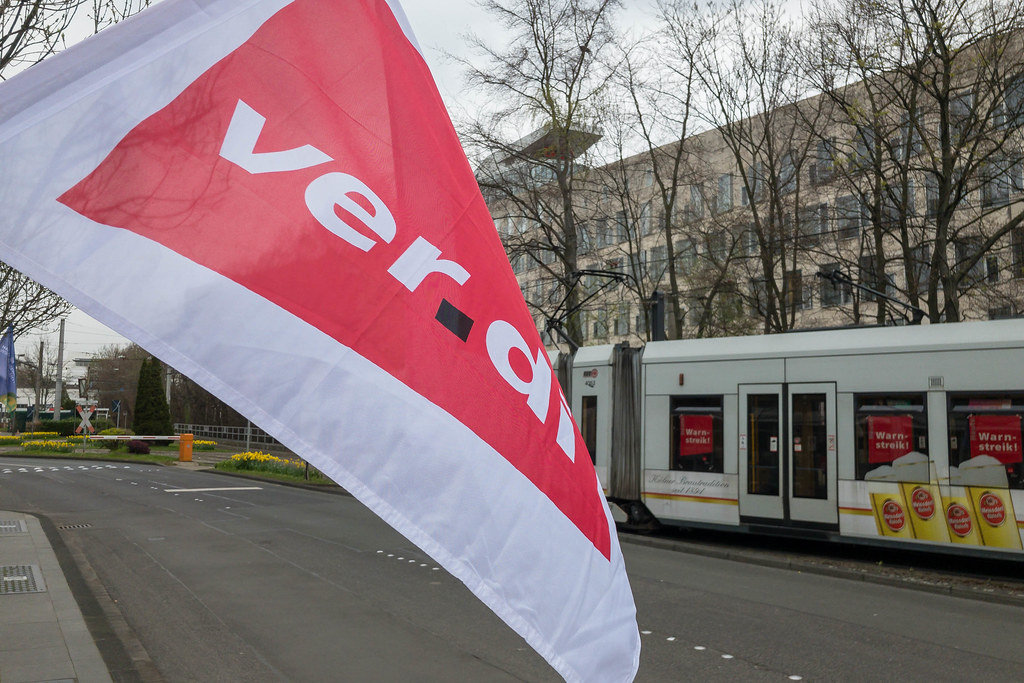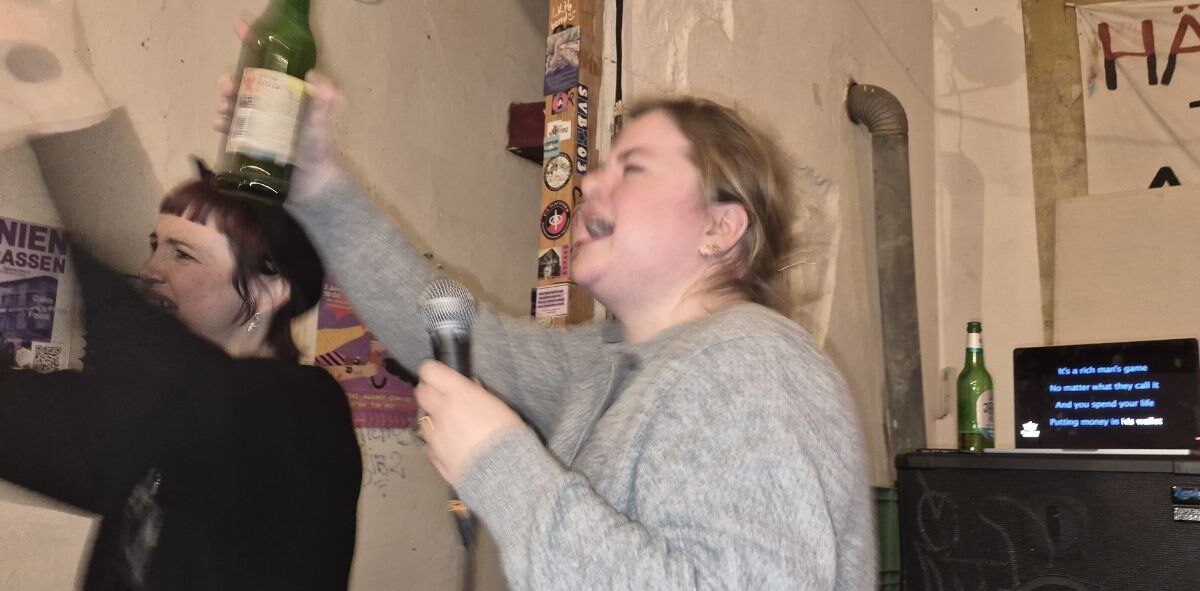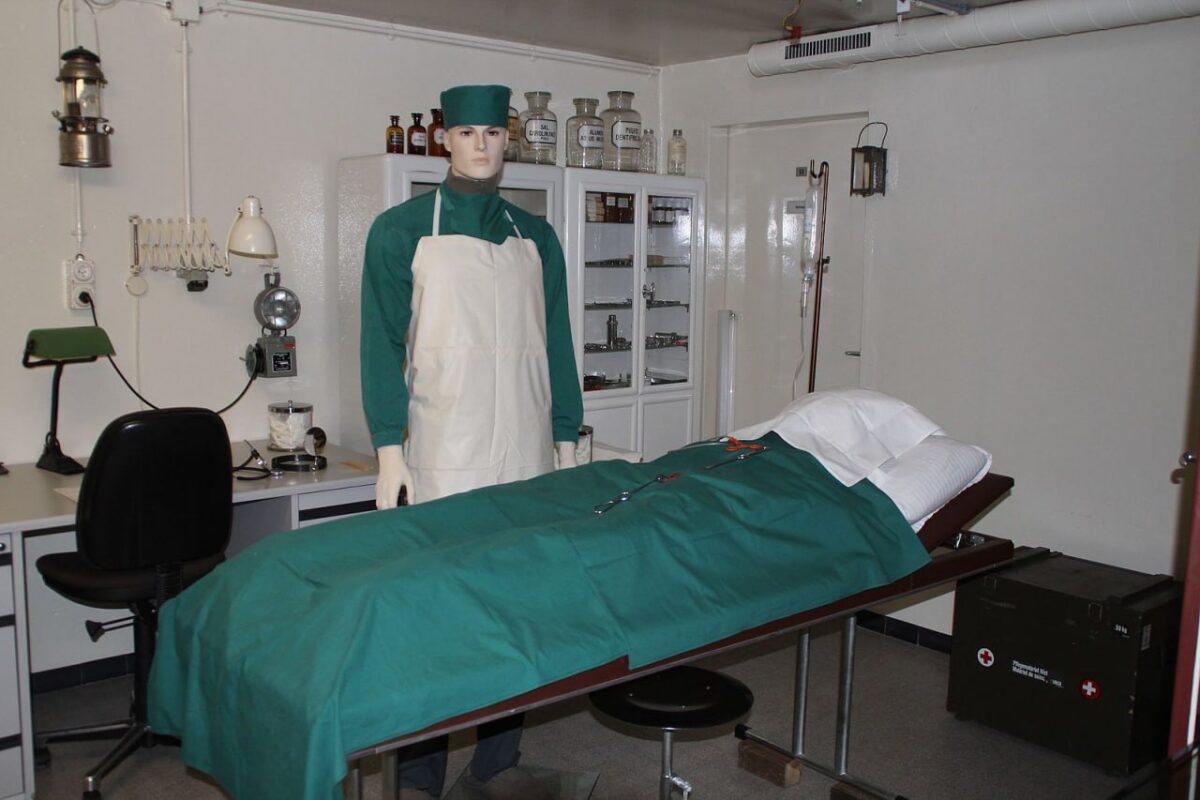Striking workers at the Charité hospital have won an important victory. After three months of strikes, their employer has agreed to hefty wage increases. Pay will be raised in stages, to reach 100% of the general public sector scale by 2030.
The workers involved are ancillaries at the Charité teaching hospital’s three main sites in Berlin—the Charité itself in Mitte, the Virchow Hospital in Wedding, and Campus Benjamin Franklin Steglitz. Essentially, the ancillaries do all the non-medical work required to keep the hospital running: cleaning, kitchens, security, transport, technical services, stock-keeping, sterilisation, and administration. Although essential to the hospital’s functioning, their jobs were outsourced in 2005 to a subsidiary, Charité Facility Management (CFM). Their pay and conditions are considerably worse than those of their colleagues employed directly by the Charité, who fall under the general public service pay agreement (Tarifvertrag öffentlicher Dienst, or TVÖD). According to the union Verdi, the pay gap is up to €700 per month.
One factor that brought the dispute to a head this year was the inflation shock of 2022–23, which cast a stark light on the pay shortfall. Another was Berlin Mayor Kai Wegner’s broken promise. After a determined political and media campaign by union activists, Wegner committed to reversing outsourcing. He has the power to do so, as the city owns the hospital. But during his first two years in office, he did nothing.
CFM employs 3,500 workers. Of those, 3,200 were affected by the dispute (300 were already paid according to TVÖD for various reasons). About half the workers at CFM are members of Verdi. After a series of shorter stoppages in March, an indefinite strike began in early April. It was to continue for eight weeks.
The number of individuals on strike at any one time was seven or eight hundred. That is one very notable thing about this dispute. It was conducted successfully by a (large) minority of the workforce. As it turned out, having a quarter of the workforce on strike was enough to disrupt normal operations. Operations had to be cancelled due to inadequate cleaning or a lack of sterilised instruments. Additionally, other staff, particularly nurses, were not happy to be made to clean wards and transport patients.
So, what were the keys to success? I spoke with works council member Sascha Kraft, who has been building the union Verdi at CFM since 2008. Preparation was crucial. Union activists have been building for this for years, gathering strength through a series of smaller disputes over pay and conditions. In the nine months leading up to the big strike, Verdi recruited 900 new members, bringing the total to 1,500. The strike began with a 99.3% vote to walk out.
As he told me, active participation was central. Striking workers manned the picket lines, and there were regular strike demonstrations, for example, to rally outside the offices of the responsible city officials or the Charité’s executive board.
The strikers were fully involved in decision-making. Many matters were voted on at mass meetings, especially when it needed to be fast. There was also a system of sector reps to make decisions on a broader basis and ensure that information flowed in both directions. And the negotiating committee itself was composed of active striking workers.
Unity was essential, of course. Sascha mentioned that the strike involved workers from eighty different nations. Verdi activist Agnieszka spoke to a conference of strike supporters about her experience building for the strike: ‘I found that we are all the same really, that we often have the same troubles, the same dreams. No matter what country we come from, what languages we speak, what colour our skin is, or what god we believe in.’
Solidarity was necessary, too. Under the specific circumstances, picketing other workers out at the hospital was not on the cards. However, Sascha mentioned that it would have been nice if Verdi had called a couple of hundred nurses out in solidarity—the nurses were being pressured to do cleaning and transport work. In effect, CFM staff who chose not to join the strike were left in peace. Some were persuaded to join as the strike continued.
Fellow workers within the Charité hospitals did provide support and donations, however. Staff at the Vivantes hospitals in Berlin donated €3,000, and €60,000 was collected across Germany. The strike fund was urgently needed to make up the shortfall between strike pay and regular pay. Verdi’s normal strike pay is 60%. Because current pay is so low, even the decision to raise strike pay to 90% still left a gap (not to mention losing weekend bonuses and the like).
Supporters also attended the picket lines and demonstrations. At the same time, links were cultivated with other workers in dispute—the BVG transport workers and the general public service pay round. As Sascha said, coordinating a strike together would have been good, but that did not really work out.
The employers caved on Friday, 6 June, although the union members must still approve the settlement. The result of their vote should be announced around 4 July. Approval is expected. The main result is that pay will be increased in increments to reach 100% of TVÖD by 2030, including any increases in TVÖD in the interim. And pay will be increased to 88% of TVÖD with immediate effect, as well as a one-off payment of €300. The immediate increase in monthly income will be between €100 and €800.
The situation with conditions and grading is the fly in the ointment. Here, the agreement does not foresee general application of the relevant parts of the TVÖD. And the workers’ demand for the right to full-time employment has not been satisfactorily resolved. As strike leader Sascha said, ‘We’ll have to fight on for that.’ And he hopes that this dispute ‘could spark a blaze in Germany’. Similar grievances are certainly on the table.
At Helios Berlin-Buch, 40 therapists have been on indefinite strike since Monday, 19 May. This is another outsourcing story. Because they are employed by a subsidiary (Helios Therapie Ost), their pay is up to €1,500 per month lower than colleagues doing the same work for the same hospital group at Helios Emil von Behring in Berlin-Zehlendorf. They are demanding equality of pay and conditions. So far, Helios has offered just 1% towards a pay gap of 47%.
Outsourced ancillaries at Berlin’s Vivantes hospitals are preparing for action over the same issues. The union campaign has started, and action is expected early next year. As Sascha told me, CFM workers will support them and intend to donate what remains in their strike fund.
The strike at CFM should serve as an inspiration for others. As Ganimete, a CFM cleaner and union activist, put it: ‘When we strike, I feel my strength. And the strength of my workmates.’



